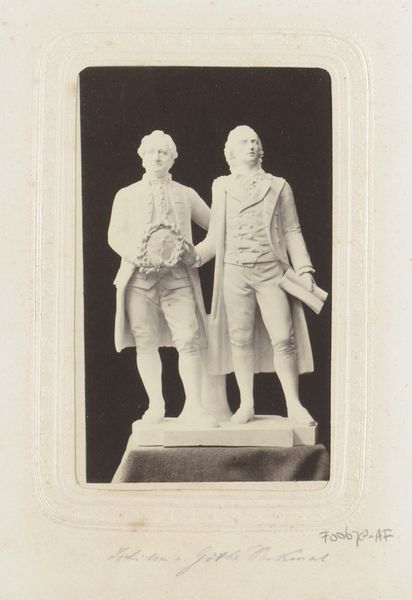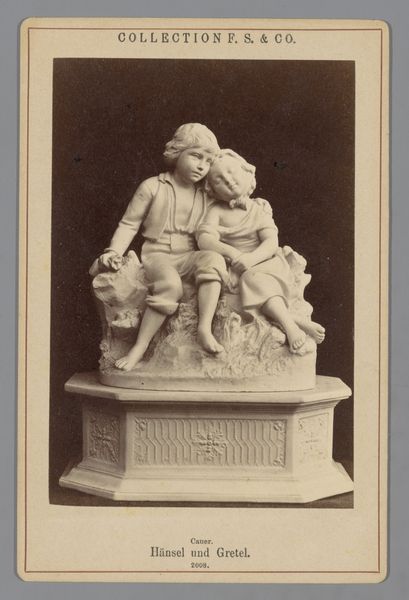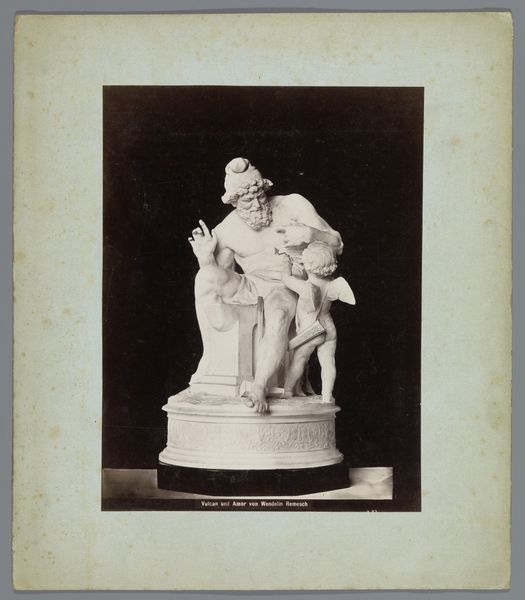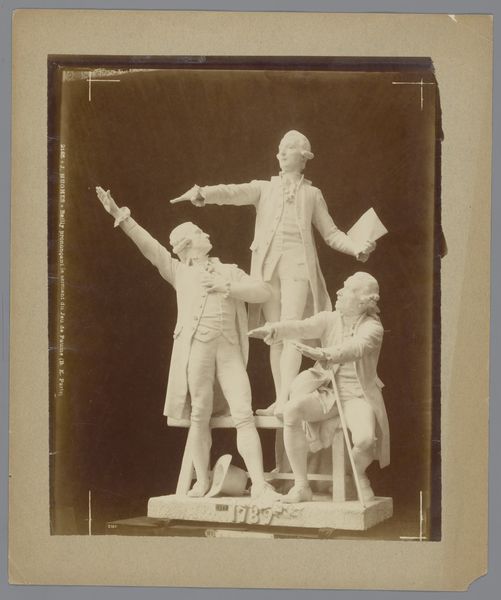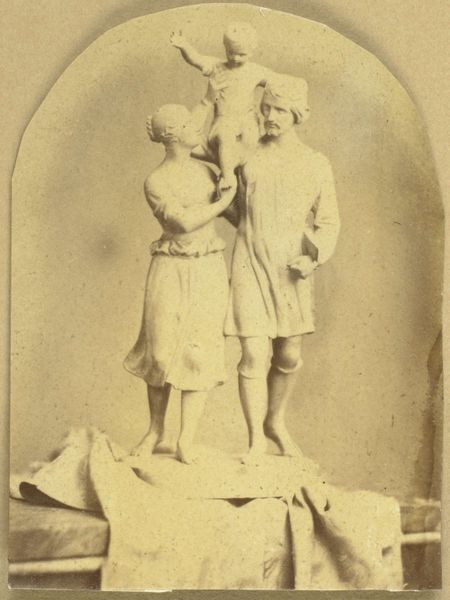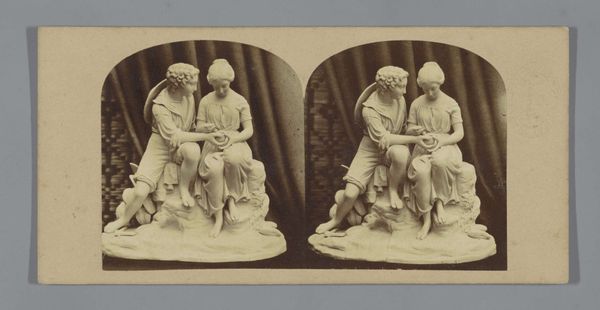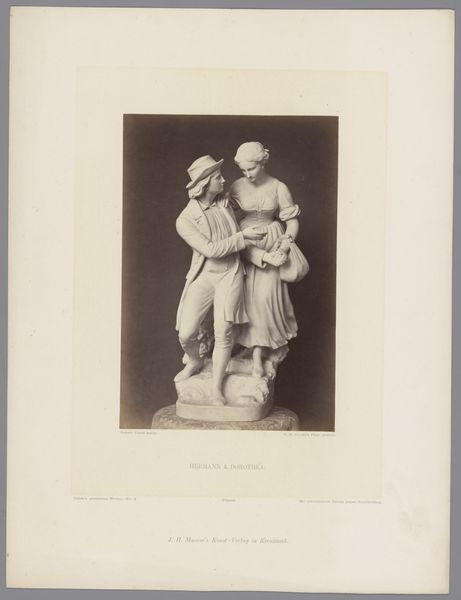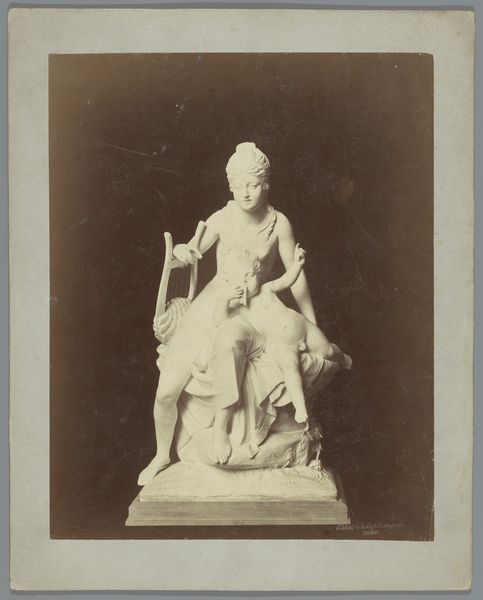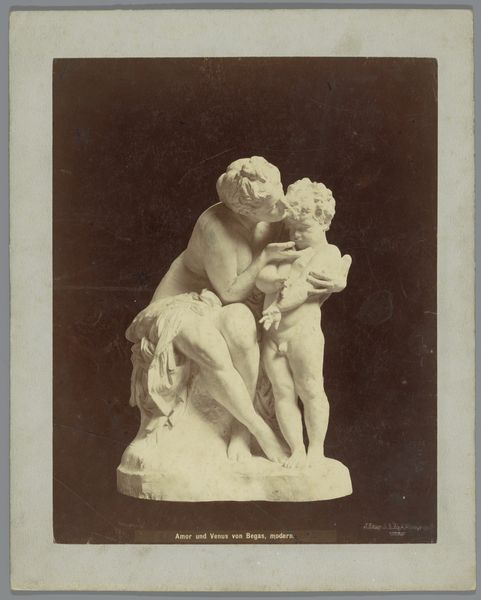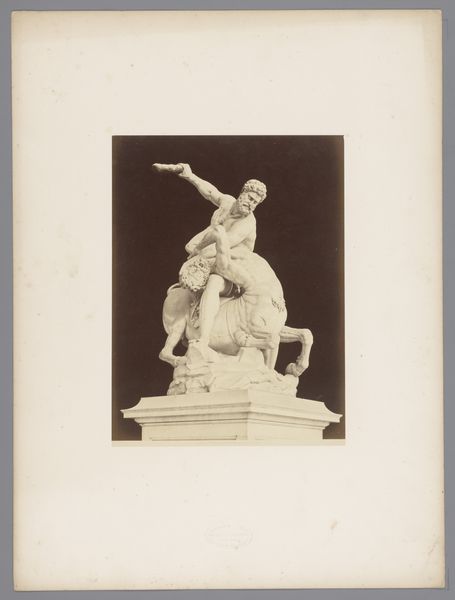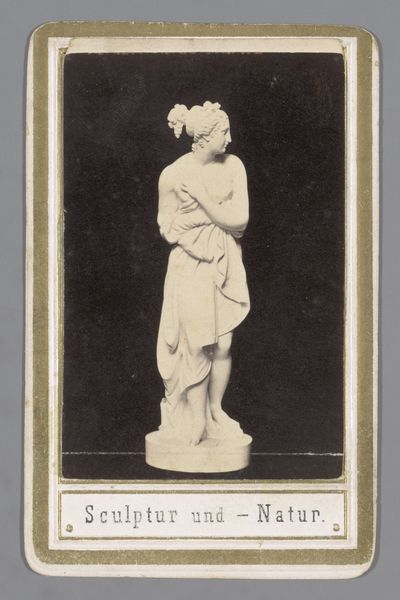
Dimensions: height 167 mm, width 109 mm
Copyright: Rijks Museum: Open Domain
Curator: Immediately, I sense an interesting blend of serenity and underlying tension from this marble sculpture. Editor: You’ve picked up on something key. This artwork is known as "Sculpture of Hermann and Dorothea," believed to be by Carl Cauer, crafted before 1910. It exemplifies Neoclassical aesthetics through a portrait of this iconic German couple. Curator: The Neoclassical style certainly suits the figures, providing them with a universal appeal, while their story likely had specific political undertones related to the Napoleonic period in Germany. Tell me more about their story. Editor: It speaks of displacement, resilience, and, ultimately, hope amid conflict. But their clasped hands, Dorothea’s downcast eyes – they signal so much. Hermann is steady, gazing outwards. But Dorothea? She looks almost burdened, carrying a sack, symbolizing perhaps the weight of their circumstances. Curator: It’s that contrast that’s striking. While the narrative addresses social and political realities, the very choice of marble, the cool, idealized forms, lends a sense of timeless nobility, attempting to elevate their experiences above the immediate historical context. Editor: Absolutely. Marble was more than a material, it was the ultimate choice for conveying moral lessons rooted in stoicism. And yet, if you examine their clothes and Dorothea’s simple sack, this piece seems a portrait of social standing amid changing times. What can we deduce from it? How does this portrait communicate social and class mobility? Curator: Well, precisely there the complexity lies. It uses a grand visual language associated with nobility to tell an entirely modern, almost bourgeois, tale. It’s the kind of piece that spoke of nationalism but in a humanist manner during the Wilhelmine era. Editor: It's that visual language I am thinking of when interpreting the psychological interplay of a man and woman holding on to each other when forced to migrate. It evokes themes of endurance and hope, even when so much is shrouded by shadows in an unfamiliar land. Curator: Ultimately, viewing this sculpture provides a fascinating insight into not just a period but how values, ideals, and realities find representation in artistic forms and, even today, impact their interpretations. Editor: A very insightful closing.
Comments
No comments
Be the first to comment and join the conversation on the ultimate creative platform.
